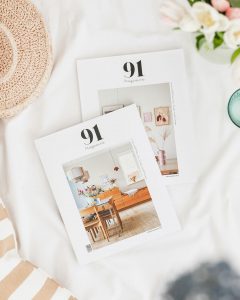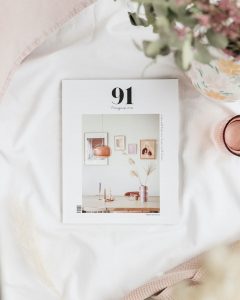Whether you have an established business or looking to start one, generating ideas is at the very heart of who you are as a creative, as a business owner, and they’ll also connect you with the needs of your ideal customers. Yet, how often do you intentionally stop to consider the ways in which you generate your ideas? Do they arrive as if by magic or do you use an intentional idea generating process?
As a Creative Business Coach, facilitating the generation of fresh ideas to help my clients progress towards their business goals or overcome any obstacles is a big part of what I do. Here I’m sharing five steps that will help you to generate fresh ideas for your business, so grab a pen and paper and write your thoughts down as you read through. By the end, you’ll hopefully have established your own personal idea generating process.

STEP 1 – SHINE A LIGHT ON YOUR BEST IDEA-GENERATING ENVIRONMENT
Think about the ideal set up to help you generate your best ideas, do you know what it is? Knowing when, where, with what and whom you get your best ideas will help you to set your environment up for success.
First, let’s focus on your ideal timings. If you’re an early bird, you’ll likely be suited to the beginning of the day when your mind is refreshed, night owls will probably prefer the end of the day and their mind is most active. If you’re a parent, it might be once the kids have been dropped off at school or once they’re in bed and you’ve got time to be with your own thoughts. Full-time business owners will likely have more time to focus on generating ideas mid-week and side-hustlers will likely be using the evenings or the weekends. Seasons can influence your ideas too. For businesses that are seasonally oriented that can be obvious, but for others, you might notice you generate ideas better when it is warm and sunny and you are outside more, or perhaps you are best when the temperature is colder and you are cosy indoors.
Next, let’s think about location. Often, we assume our place of work is the ideal location, and whilst that may well be, stepping away from technology and going for a walk in nature can boost our ability to generate new ideas too! Ideas can also bubble to the surface when we’re doing mundane tasks at home or sitting in our favourite armchair with a cuppa. Your daily commute is another good one to try, too. Being curious about the impact of your location can help you to generate fresh ideas, so write down three new locations you can try and see what you can learn.
Now, consider what you need when generating fresh ideas, your creative medium is a given but write them all down so you can see the tangible things you need to help you. Now add to your list other mediums that influences your ideas. Perhaps your favourite magazine or podcast gets the ideas flowing. Maybe it’s taking in an exhibition or perusing the shops or your local car boot sale. If you know what helps, you can mindfully include them in your idea generating process.
Lastly, think about the people in your life that help you generate ideas. Do your best ideas come when you’re bouncing ideas off your team, business partner, mentor, or coach? You could be inspired by a muse, by your interactions with clients or customers, or even whilst you’re people-watching. Give it some thought and write it down.

STEP 2. DEFINE THE IMPACT YOU’D LIKE YOUR IDEA TO HAVE
Intentionally considering the impact you’d like to make with your ideal customers keeps your ideas focused on the people that matter most, those that support your creative business! To achieve this impact-focus, think about your ideas in two categories – proactive and reactive.
Many of the world’s most renowned creatives encourage you to be inspired (and freed) by the understanding that all creativity is born from creativity that already exists. The talent is in turning it into something new, proactively bringing your own personal spin or unique blend of creativity to it!
Reactive ideas are motivated by the desire to meet a specific need or purpose. A recent and very real example of this would be businesses pivoting in lockdown to continue meeting the needs of their customers in their homes instead of on the high street. Your current customers can help you generate new, reactive ideas via their feedback so pay attention! If you’re hoping to expand into a new market, put yourself in the mindset of your ideal buyer and think about the need they will be looking to fulfil.
Generating your ideas based on impact helps you to communicate your ideas to your target demographic more effectively as well. Were you hoping to inspire awe, wonder (and purchase!) or to provide the creative solution that puts an end to a customer’s search?
STEP 3: ALIGN YOUR IDEAS TO YOUR CORE MOTIVATION
Check that your ideas, alongside addressing the needs of your ideal buyers, also align with your passions as a creative and your purpose as a business owner. This intersection will motivate and focus your ideas, so they serve you and your market.
If you’re already clear on your core motivations write them down so you can reference them when you want to generate fresh ideas. If you not, spend some time now thinking about them. Maybe your creativity is inspired by aesthetics and beauty, the environment and sustainability, the love of your cultural heritage. Your business might be inspired by the desire for independence, a work-life balance that better supports your family life or a medical condition. Perhaps it’s the vessel that supports your charitable or community spirit.

STEP 4: DESIGN YOUR IDEAS SO THEY’RE SPECIFIC, MEASURABLE AND ATTAINABLE
Time to get specific about your ideas, what will they look like once you’ve brought them to life? Map it out! For example, if you’re looking to develop an eco-conscious fashion brand think about the materials you will need, and the supply chains you will use. This transitions you from your creative idea generating mindset into business owner mindset.
You should also think about how you will measure the success of your idea because designing your ideas with the ideal outcome in mind will help you to map it out more effectively. For example, if your idea is about revenue, what margins or sales targets will you set and how does this impact the way you will execute upon your idea?
Ideas should also be attainable. This doesn’t have to mean easy but achievability in real life is important, time is money as they say! For example, do you already have the creative skills to pull it off or do you need to learn something new? Would outsourcing be the right way to make your idea attainable?
STEP 5: REFINE YOUR IDEAS USING A REFLECTIVE MINDSET
Scheduling time to reflect as a part of the idea generating process helps you to bank the learning that comes from experience, but often we’re so focused on what’s ahead we forget to stop and consider what we’ve already learnt! A reflective mindset enables you to approach idea generation as a process of iteration, freeing you from the task of generating the right idea so you can enjoy the creative act of idea generation and generate even fresher ideas for your creative business!
Michelle Scicluna is a creative small business coach offering group and 1-to-1 sessions.











